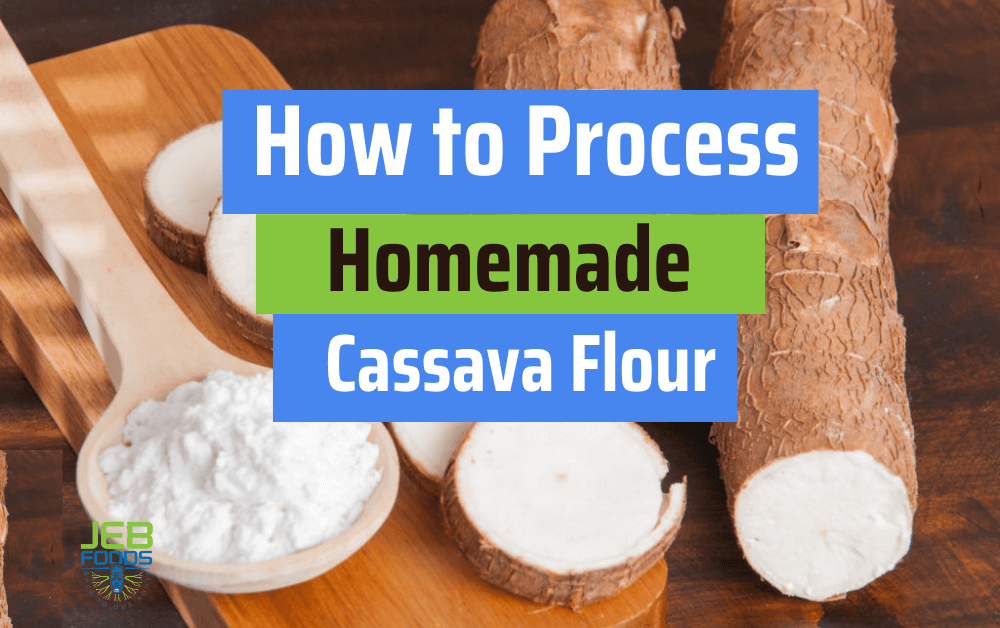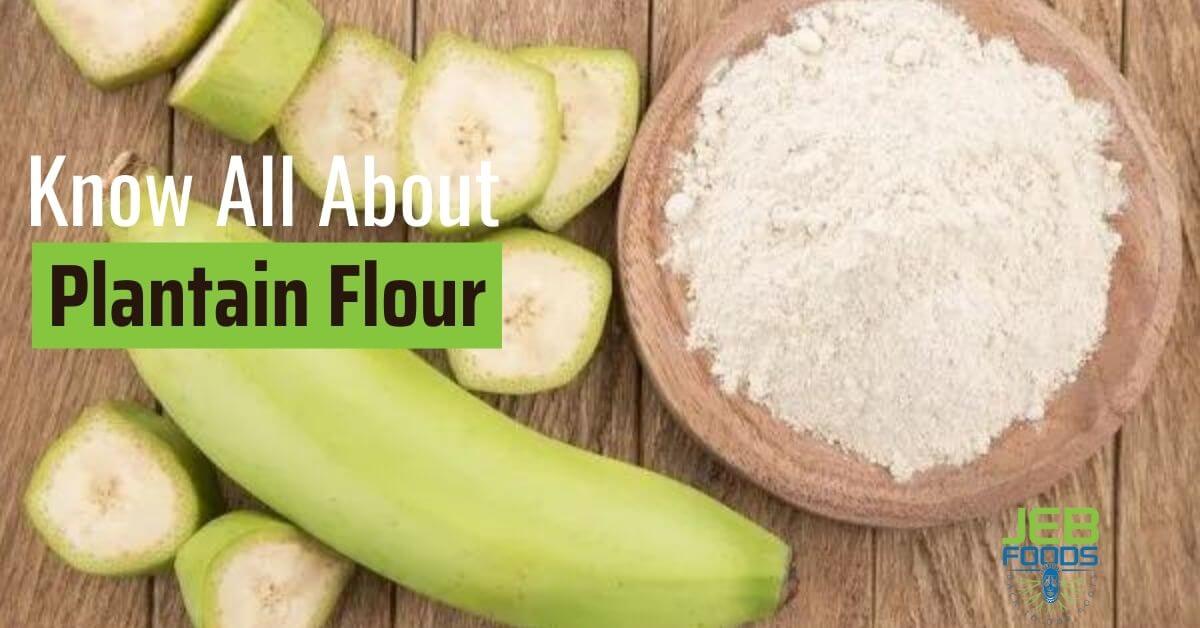Cassava flour is easy to process from home. This flour is being heralded as the new star among substitute flours. It is a gluten-free, grain-free flour that is high in fiber.
Derived from the starchy root tubers of the Cassava plant. It is a plant species that belongs to the milkweed family.
Also known as Yuca or Manioc, it is thought to have originated in South America, where indigenous peoples ate the plant. Many tropics and subtropics regions around the world now have manioc growing areas.
Millions of people in South America, Asia, and Africa rely on cassava as a staple food. Cassava flour is simple to make with essential kitchen tools.
It is gluten-free for those who have celiac disease. I use it to make pancakes, slices, and cookies and a half-and-half mix with other flours to make bread or pizza dough.
In this article, I’ll walk you through the process of making your cassava flour.
Why You Should Process Cassava Flour At Home
Table of Contents
ToggleCassava flour is simple to prepare using basic kitchen tools. It is gluten-free for individuals who have celiac disease. I use it to make pancakes, slices, and cookies, combining them (half and half) with other flours to make bread or pizza dough.
Cassava roots do not store well after harvesting and must be cooked or processed within three days. Making flour is a fantastic method to preserve and store cassava, and the final flour will be put in an airtight glass jar for several years.
What should motivate you on DIY? If you do this yourself, some money can be saved since you will not have to shop for the same grocery items. But if you desire a well processed and healthy cassava flour, get it here.
Cassava flour is one of those food products whose plant can be cultivated in the garden, and it also does not require any unique products. You can then grind the cassava and use it in your baking.
You save money while also encouraging kids to consume healthily. You’ll enjoy seeing where and how the food is made from the ground up. The kids will have a great time assisting you in the making and use the cassava flour. When you do something for yourself, you often feel a sense of accomplishment.
Cassava flour is among the hardiest plants in all climates, making it effortless to grow!
Benefits of Cassava Flour
Cassava flour contains a lot of carbs. A cup of cassava flour (285 g) contains around 110 g of carbs, 5 g of fiber, and 4.5 g of sugar. It’s high in vitamin C, with one cup providing nearly half of the daily requirement.
This is useful in aiding digestion and helping out with people with celiac disease.
You can read more about the health and nutritiona benefits of cassava flour here
Making Cassava flour in 5 easy steps!
Cassava contains alkaloids and glycosides (cyanogenic glycosides), which combine to create hydrocyanic acid (Prussic Acid).
These natural plant poisons are eliminated from tubers before eating by boiling (they dissolve easily in water, so be sure to dump the water after cooking) or by fermentation and oxidation by drying.
Cyanides are found in all plant sections, with greater amounts in the plant stems and root skin. These poisons are removed by fermentation and oxidation in producing Cassava flour from raw tubers.
Now let’s get into the processing
1. Tubers should be harvested and peeled.
Remove the soil hanging to the skin of the roots after harvesting before peeling. The roots must be thoroughly peeled after they have been harvested. Wash and peel the fresh roots. The roots are then cut into small pieces measuring 5 x 0.5 x 0.2 cm.
The skin is relatively thick, up to 2mm thick, rigid, and easily separated from the flesh. Because the skins must be discarded, please do not use them in cooking or stock-making. They can, however, be used as mulch or composted.
2. Cutting
The roots must be grated after they have been peeled and cleaned. You can use a standard kitchen grater or an electric food processor to do this for several reasons.
The more refined the grating of the roots, the better. To begin, the smaller and more refined the grated pieces are, the more surface area is created, which, when in contact with air, will oxidize and aid in the breakdown of the prussic acid. Second, finer particles dry faster and are easier to mill into flour.
3. Holding
Place the freshly grated flesh in a large enough clean cloth or tea towel, tie the corners, wring out any moisture before drying, and hang it overnight or for at least 5 hours.
Mine is usually hung over the kitchen sink. The hanging serves two functions. First, it allows any excess moisture to drain away. Second, a brief fermentation occurs, which further degrades the prussic acid.
4. Curing
Spread the grated cassava out to dry in a thin layer no thicker than a few millimeters thick. Cassava should be completely dry within 2 or 3 days (or dried in a hot air oven at 55o C); otherwise, it may mold.
In dry, sunny weather, to speed up the drying process, I often lay slices of cassava out in thin layers on flat surfaces such as baking trays or winnowing baskets, where they will dry in the sun.
You may need to leave the cassava trays in the sunlight overnight if you do not have an enclosed solar dehydrator to speed up the drying process. I would turn on an electric food dehydrator or place the trays in an oven until they are dehydrated if the weather is too damp or rainy.
Allow some moisture to escape to keep the oven-dry when drying in the oven. To keep the oven door ajar, I usually put the handle of a wooden cooking spoon in it.
5. Storing and Grinding
Cassava chips should have a moisture content of less than 8% after drying. When the grated cassava is completely dry and crisp, it should be immediately stored in an airtight container, preferably a large airtight glass jar.
As soon as it’s dry, grind it and store the flour in an airtight container. The flour is packaged in plastic bags, allowing it to be stored for at least eight months. Even if you’re leaving it for a day or two before grinding, keep it in airtight containers to avoid re-humidification.
You can safely store dried grated cassava in an airtight container for an extended period until you’re ready to grind it.
How to DIY Homemade Cassava Flour
To begin get between 2 to 5 pounds peeled frozen or fresh cassava or Yuca (or more)
1. Preheat your oven to the lowest temperature, approximately 170 degrees Fahrenheit, which worked wonderfully.
2. Bring the cassava or Yuca to a boil for 15-20 minutes, or until it’s slightly fork-tender, but don’t overcook it, or it won’t grate correctly.
3. Drain the boiling water from the stockpot and replace it with cold water to enable the cassava or Yuca to cool (around 5 more minutes)
4. Grate the cassava or Yuca and spread it out on a baking sheet in a single layer (use additional baking sheets as necessary). If you use a food processor to grate your cassava or Yuca, you will end up with my cassava or Yuca dough, which is also wonderful but unsuitable for this recipe!
5. You may also use a dehydrator, but I didn’t have one, so I used my oven instead.
6. Bake for up to 8 hours, or until the water has evaporated (I baked from 11-4, and mine was completely dehydrated, it will depend on the size of your shreds)
7. Grind the dry shreds in a food processor or blender. They must be fully dry, or otherwise, you will not obtain flour.
8. I mixed for a good minute or so to include the larger bits. The result is a fine silt-like flour with a very light hue.

How Can I Ensure That My Cassava Flour Is Very Smooth
A blender or vitamiser can be used to grind the ingredients. The drier and crisper the grated cassava, the easier it will be to grind into a fine powder.
After milling the chips, the flour is sieved through an 80 mesh sieve. I usually sift the ground flour through a fine kitchen sieve to remove significant or coarse bits before grinding the next batch.
The yield recovery of flour is approximately 20-40%, depending on the crop species, harvesting time, and machinery used.
Can Cassava Be Used To Make Flour
Yes, cassava flour can be produced out of cassava roots.
With water and no other main equipment, it is feasible to get first-rate flour from cassava roots. As a result, the processing of cassava flour is particularly suited to rural enterprises.
How Can I Tell If Cassava Flour Is Of High Quality
Cassava flour of high quality should be white and fragrant. Insects or harmful microorganisms should not contaminate them. If drying is done outside, it should be done on sunny days. Otherwise, the chips will stink and turn brown.
Will Toxins Be Neutralized If I Process Cassava Flour At Home
The straight answer is Yes, Although cassava root has naturally occurring cyanide compounds (as do almonds and spinach!). And, yes, they can be highly toxic. But only if consumed raw.
As a result, traditional cultures that rely on cassava for sustenance have centuries-old soaking, cooking, and fermenting processes. These processes remove the toxic compounds and keep people from becoming ill.
You can rest assured that all commercially available cassava and tapioca flours are free of cyanide.
Cassava cultivars with low levels of cyanogenic compounds are preferable because they are potentially toxic. However, the cyanogenic content of fresh roots is not a significant issue in cassava flour production because it is eliminated during the flour-making process.
I recommend you purchase a well processed and certified cassava flour here.
Avoiding Toxicity Problem In Homemade Cassava Flour
Cassava is an important food source for impoverished nations; however, it includes poisonous cyanogen chemicals and antinutrients.
Cassava contains three types of cyanogens;
- Cyanogenic glucosides (95 percent linamarin and 5 percent lovastatin)
- Cyanohydrins
- Free cyanide.
There are several processing procedures for removing cyanogens, and their efficacy is dependent on the processing stages and sequence used, which is sometimes time-sensitive.
Because it ruptures cell compartments, pounding or crushing is the most efficient method for removing cyanogenic glucosides. It allows direct interaction between linamarin and the enzyme linamarase, which catalyzes the hydrolytic breakdown.
Crushing and sun-drying cassava roots into flour eliminates 96 percent to 99 percent of total cyanogens, whereas soaking and sun-drying into lafun or fufu, or soaking, fermenting, and roasting into gari or farina, removes around 98 percent.
Pounding and boiling in water is an excellent method for removing 99 percent of cyanogens from cassava leaves, containing ten times more cyanogens than roots.
Other toxic-reduction techniques include creating low-cyanogen cassava cultivars and transgenic cassava lines with increased cyanogenesis during processing.
How Does Cassava Flour Taste
Cassava tubers do not have a distinct flavor; they are likely to be slightly sweet but cannot be compared to sweet potatoes or domestic potatoes.
Aside from their high nutritional value, the tubers have the added benefit of being naturally gluten-free, allowing people with grain allergies to consume them.
These are significantly benefited by cassava flour, which can be used in baking the same way that wheat flour can.
Is cassava Edible Healthy
Cassava is a calorie-rich vegetable that is high in carbs as well as essential vitamins and minerals. Vitamin C, thiamine, riboflavin, and niacin are all found in abundance in cassava.
Toxins in cassava tubers can be removed easily by drying, cooking, heating, boiling, or steaming. It is then nutritious and, therefore, very healthy food that can be used in various ways in the kitchen.
Nutrition Facts of Cassava Flour
Cassava Flour is a tasty flour alternative for those who (must) follow a grain-free or gluten-free diet. It has a high starch content, a mild flavor, and a smooth texture. As a result, cassava flour closely resembles the consistency and properties of conventional flour.
Unlike other gluten-free flour alternatives (such as buckwheat or quinoa flour), Cassava flour can frequently replace traditional gluten-containing flours such as wheat flour.
Other gluten-free flours usually necessitate the addition of additional ingredients to form a workable dough.
Cassava flour has the following nutritional values per 100 grams, according to the USDA:
- 371 kcal of energy
- 88.6 g of carbohydrates
- 0 g of protein
- 0 g of fat
- 57 mg of calcium
- 303 mg of potassium
The high proportion of carbohydrates stands out in the nutritional values. On the other hand, Wheat flour contains approximately 70 grams of carbohydrates per 100 grams of flour.
Thus, Cassava flour is an excellent energy source that does not contain any protein and only a few essential amino acids. Wheat flour contains 11 g of protein.
It is also deficient in micronutrients such as vitamins. On the plus side, cassava flour contains a lot of calcium and potassium.
How Can cassava Be Harvested And Stored
Cassava can be harvested all year; the cultivation period allows for up to 24 months. However, the tubers can usually be harvested after about a year, with sweet variants ripening faster than bitter variants.
When the leaves color changes, then the tuber is finished, and the starch content is peaked. Because the tubers do not ripen at the same time, harvesting takes several weeks.
To harvest the root vegetables, the Cassava plant is completely removed from the ground.
Cassava is difficult to keep and store because it rots after two to three days and loses its starch content.
The latter can also occur if the tubers are left in the ground for an extended amount of time. As a result, they must be harvested instantly, further sorted, or adequately left to cool for preservation or wax-coated.




